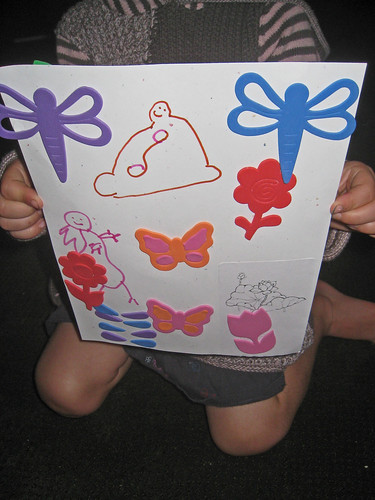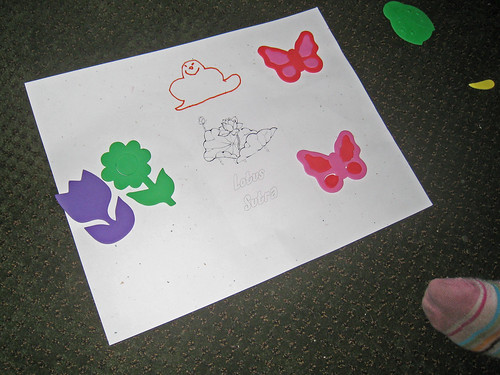 This was the first Dharma School of the year, so I had a very short lesson introducing the theme.
This was the first Dharma School of the year, so I had a very short lesson introducing the theme. I focused first on paying attention and the effort of sitting still in medition through the picture book Let's Do Nothing!
We sang the song "This Light of Mine" as a prelude to the idea of the Illuminating Light coming from the Buddha.
I told the kids that we would be talking about stories from the Lotus Sutra, that these stories were told to many thousands of beings, including Bodhisattvas. Some of the kids remembered learning about the Bodhisattvas, and they were told by the Buddha in a long long talk, and it's going to take us the whole year to talk about it.
When the Buddha gives this talk, I say, "This light shines from his head, this beautiful brilliant light. Flowers rain from the sky, special rare flowers. And the earth quakes and trembles, because what the Buddha is telling them is so important. The Buddha is telling them how to live this life, and let go of pain. How to be a Buddha. How to be a Bodhisattva. So last year we learned about Bodhisattvas, and this year we learn how to be a Bodhisattva."
I showed them pictures of the Buddha with the light, which also included a lotus flower seat.
Before we retrieve the snack, we sing this song:
Row, row, row your boat
To the other shore.
Buddha Power is our guide.
We need no other oar.
Then, for our craft, they drew pictures of the Buddha with the light, and I had various foam and glittery stickers they could add as well.






